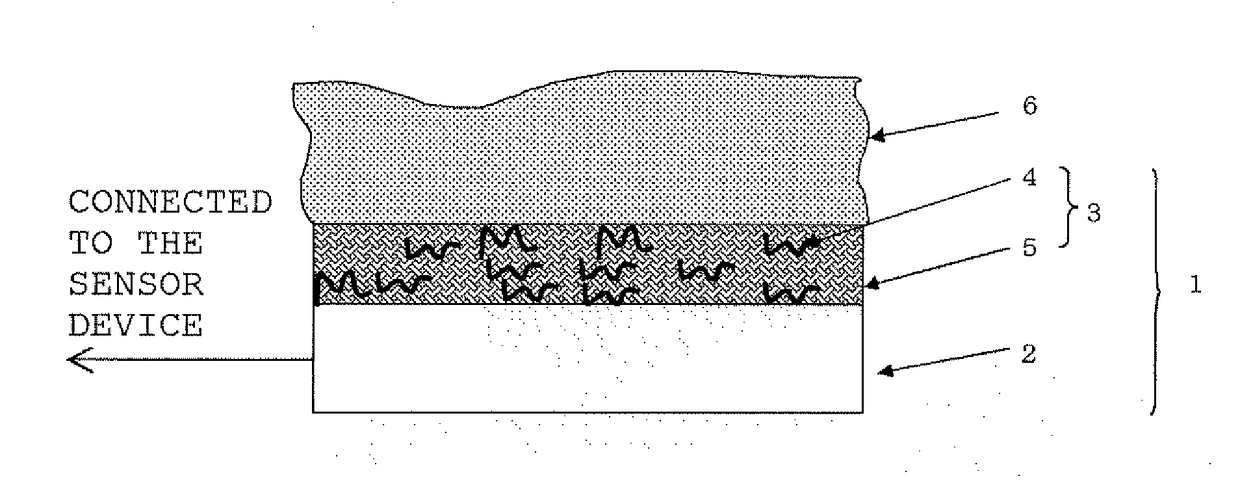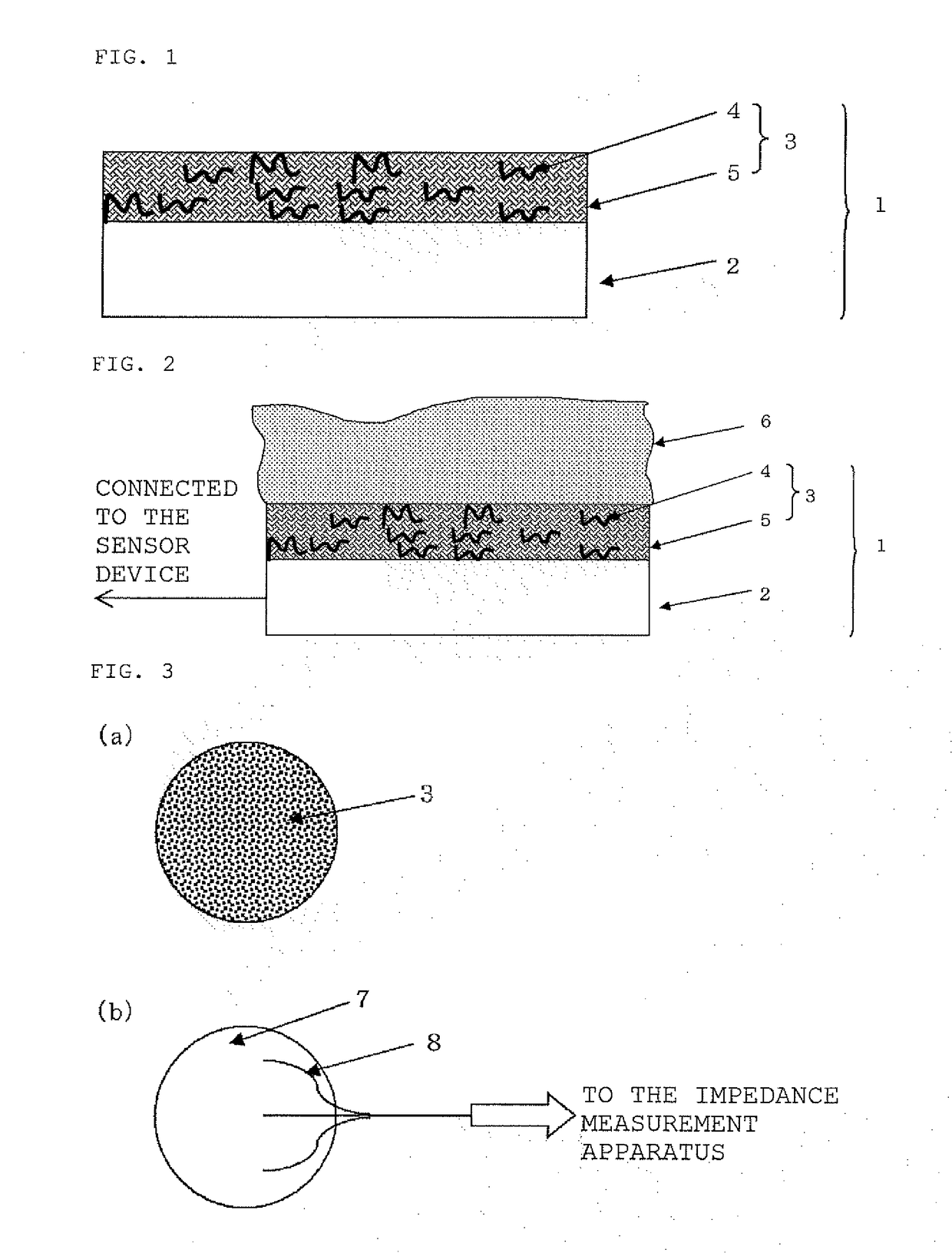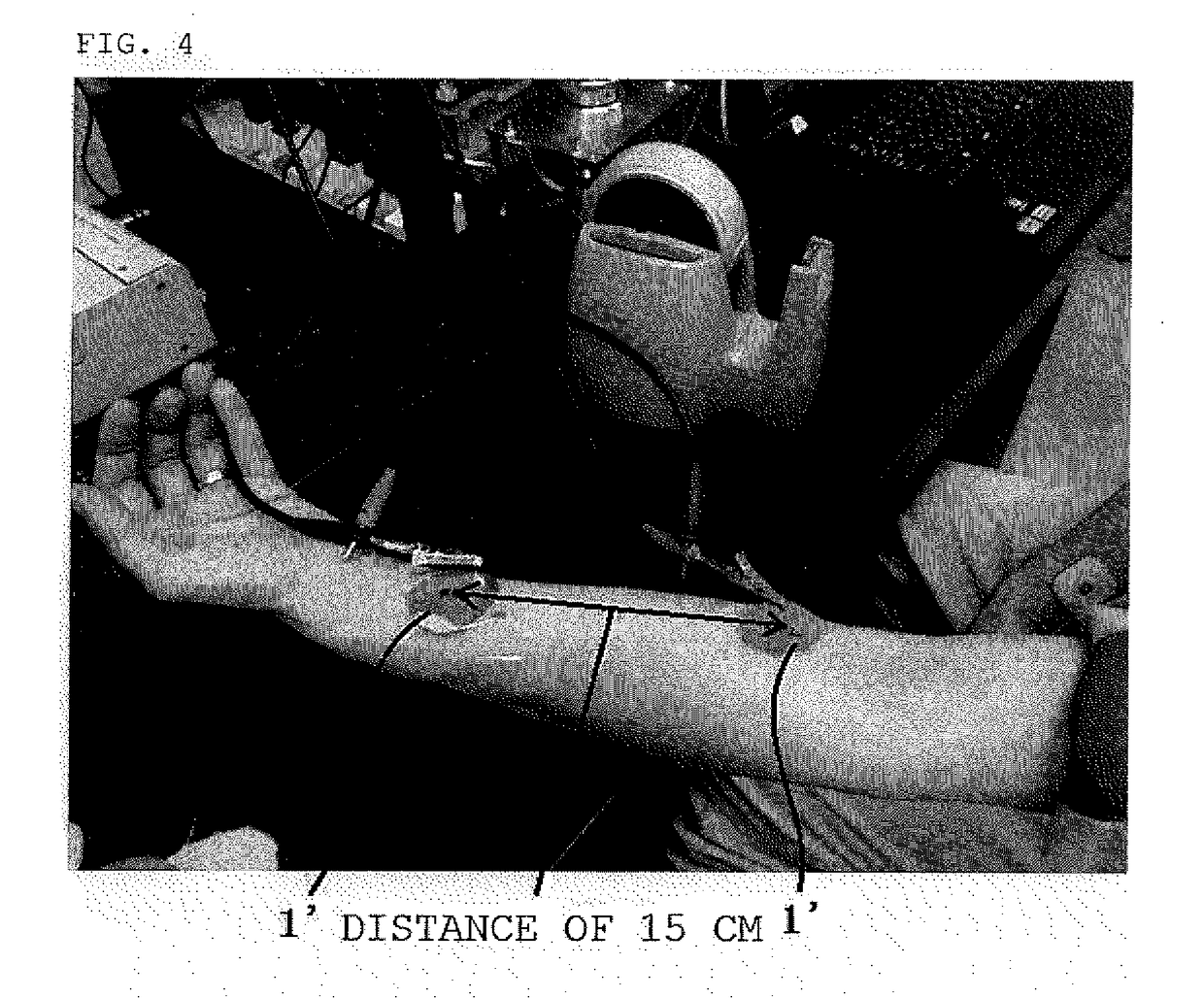Biomedical electrode composition, biomedical electrode and method for manufacturing the biomedical electrode
- Summary
- Abstract
- Description
- Claims
- Application Information
AI Technical Summary
Benefits of technology
Problems solved by technology
Method used
Image
Examples
example
[0112]The present invention will be described in detail with reference to the Examples and Comparative Examples, but the present invention is not restricted thereto.
[0113]Ionic polymer compounds 1 to 10, a Comparative polymer compound 1, and Comparative ionic polymer compounds 1 and 2 blended into a biomedical electrode composition solution as a polymer compound are shown as follows.
[0114]A PGMEA (propylene glycol-1-monomethyl ether-2-acetate) solution including 30% by mass of each monomer was mixed in a reaction vessel, and the reaction vessel was cooled down to −70° C. in nitrogen atmosphere, subjected to reduced pressure for deaeration and nitrogen blow three times. After the product was heated at elevated temperatures up to room temperature, AIBN (azobisisobutyronitrile) was added by 0.01 mole relative to 1 mole of the total monomer as a polymerization initiator, heated at elevated temperatures up to 60° C. Then the product was reacted for 15 hours to obtain solutions containing...
examples 1 to 14
, Comparative Examples 1 to 5
[0158]Polymer compound solutions, Comparative salts, and additives (conductive improver and crosslinking agent) were blended with the compositions described in Table 1 to prepare biomedical electrode composition solutions (biomedical electrode composition solutions 1 to 14 and Comparative biomedical electrode composition solutions 1 to 5).
TABLE 1Biomedical electrodePolymer solutioncomparative saltAdditivecomposition solution(parts by mass)(parts by mass)(parts by mass)Biomedical electrodeIonic polymer—Carbon black (0.3)composition solution 1solution 1(10)Biomedical electrodeIonic polymer—Carbon black (0.3)composition solution 2solution 2(10)Biomedical electrodeIonic polymer—Carbon black (0.3)composition solution 3solution 3(10)Biomedical electrodeIonic polymer—Carbon black (0.3)composition solution 4solution 4(10)Biomedical electrodeIonic polymer—Carbon black (0.3)composition solution 5solution 5(10)Biomedical electrodeIonic polymer—Carbon nanotubecompos...
PUM
| Property | Measurement | Unit |
|---|---|---|
| Length | aaaaa | aaaaa |
| Length | aaaaa | aaaaa |
| Thickness | aaaaa | aaaaa |
Abstract
Description
Claims
Application Information
 Login to View More
Login to View More - R&D Engineer
- R&D Manager
- IP Professional
- Industry Leading Data Capabilities
- Powerful AI technology
- Patent DNA Extraction
Browse by: Latest US Patents, China's latest patents, Technical Efficacy Thesaurus, Application Domain, Technology Topic, Popular Technical Reports.
© 2024 PatSnap. All rights reserved.Legal|Privacy policy|Modern Slavery Act Transparency Statement|Sitemap|About US| Contact US: help@patsnap.com










